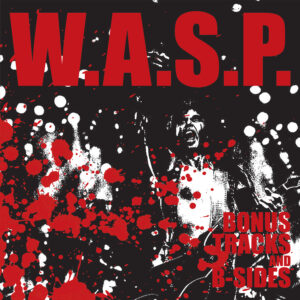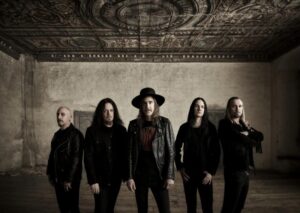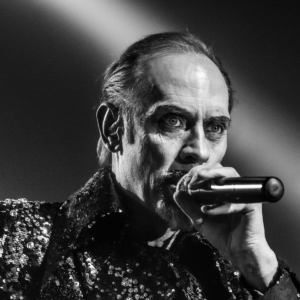Lou Reed, Rock ‘n’ Roll Iconoclast, Dead at 71

The walk on the wild side has ended. And it was a wild one, indeed. Lou Reed, who died on Sunday at the age of 71 at home on Long Island, was never on any kind of mission other than to satisfy his own muse. And that muse was meandering — occasionally, and seemingly accidentally, connecting with mass tastes (“Walk on the Wild Side,” “I Love You, Suzanne”) but far more often diving into ambitious and challenging thematic works such as his music with the Velvet Underground and solo projects like “New York,” “Songs For Drella,” “Magic and Loss” and “The Raven.” And then there were occasionally polarizing moments with the noise of 1975’s “Metal Machine Music” and the 2011 “Lulu” collaboration with Metallica, which was his final release.
“I’m not a human jukebox,” Reed once explained. “I’m not there as an entertainer. I’m there to try to communicate something. I think of it as a gift; the idea that you’re giving something to the audience is very important, or why else would you do it?”
And in embracing that philosophy, Reed also knew, and perhaps enjoyed the fact, that he would not be pleasing all of the people all of the time but certainly left an enormously influential legacy.
“I don’t expect everybody to get it,” he said. “I’ve accepted the idea that you can’t reach everybody and still make something that’s special and meaningful. They’re like opposite goals, I guess.”
Reed, who was the subject of widespread but erroneous death reports in 2001, underwent a liver transplant during April in Cleveland — though the operation was revealed in June. He declared the operation a success, posting a note on his web site that “I am a triumph of modern medicine, physics and chemistry. I am bigger and stronger than ever.” His last public appearance was on Oct. 3 in New York City to celebrate the publication of “Transformer,” a collaboration with photographer Bob Rock about the period surrounding Reed’s best-selling 1973 album “Transformer.”
Reactions began pouring in instantly online, to a point where Reed’s official web site was inaccessible for part of Sunday. John Cale, who co-founded the Velvet Underground with Reed in 1964 and recording the Andy Warhol tribute “Songs For Drella” with him in 1990 wrote that, “The world has lost a fine songwriter and poet…I’ve lost my school-yard buddy.” Red Hot Chili Peppers bassist Flea posted that, “I love Lou Reed so much. Always,” and the Who wished him a “Walk on the peaceful side.” Weezer acknowledged the “big influence” the Velvet Underground had on the band, and author Salman Rushdie noted that, “My friend Lou Reed came to the end of his song. So very sad. But hey, Lou, you’ll always take a walk on the wild side. Always a perfect day.”
Others paying instant tribute to Reed included filmmaker Judd Apatow — who tweeted that Reed gave him tinnitus during a 1989 concert — Guns N’ Roses, Nile Rodgers, My Morning Jacket’s Jim James, Fran Ferdinand’s Alex Kapranos, Gary Numan, Sharon Jones, Sonic Youth’s Lee Ranaldo and Kim Gordon, and many others.
“Lou Reed was a very interesting person, but more than that he was a great songwriter,” said Dick Wagner, Reed’s guitarist during the tour that led to the seminal 1974 live album “Rock ‘n’ Roll Animal,” Reed’s first gold record. “It was very different than anybody else I’ve worked with; he was a little bit distant, a little bit hard to know but always very positive about his music.”
Reed was born on March 2, 1942 in Brooklyn and grew up in Freeport, Long Island. He began playing guitar during his youth and played in high school bands, making his first recording with a doo-wop group called The Jades. He was also treated with electroconvulsive therapy as an attempt to “cure” his bisexuality, an experience he’d document in the 1974 song “Kill Your Sons.” Reed would, in fact, marry twice — to Silvia Morales and then to fellow artist Laurie Anderson, who he wed in 2008 and now survives him.
Reed attended Syracuse University starting in 1960 to study creative writing, journalism and film, but music had already hooked him. “When I got out of college, I wanted to write the great American novel,” he said. “But I like rock n’ roll. So I wanted to use adult themes, themes of novels, in songs, really widen the parameters, bust open what you were writing about in pop songs.”
He later added that, “Making music this way, it’s completely different than film, completely different than a novel, probably different than an opera. It’s a person listening to a literary story with music accentuating the words and the moods…It’s very much a one-to-one experience, where the listener is drawn into the mind of the narrator, or the singer. It’s communication.”
Reed’s professional music career ironically started at Pickwick Records, where he was an in-house songwriter penning knock-off pop ditties, but he graduated to grander ambitions when he and Cale formed the Velvet Underground with guitarist Sterling Morrison and drummer Maureen Tucker. Andy Warhol managed the group — which was inducted into the Rock and Roll Hall of Fame in 1996 –and made it part of his groundbreaking Factory enterprises, blending its music with art and contemporary marketing conceits over the course of Reed’s four albums with the band.
After a brief tenure as a typist with his father’s accounting firm, Reed went solo in 1971 with a self-titled album, then hit pay dirt with “Transformer,” co-produced by David Bowie and his Spiders From Mars guitarist Mick Ronson; the album hit No. 29 on the Billboard 200 while “Walk on the Wild Side” — with its controversial references to transvestites and fellatio — reached No. 16 on the Hot 100, his only charting hit. He then followed with the dark and bleakly foreboding “Berlin,” setting a pattern he would sustain throughout this career.
In rock ‘n’ roll, people always get really intrigued with the personality of a writer and see him more as a performer. I always looked at it as writing,” Reed explains. “I don’t map these things out, have outlines and maps and graphs and say, ‘Oh, we need a song for THIS.’ I think my basic audience takes these things exactly on the level they’re offered.”
A reminder of that, of course, was the universally panned “Lulu” — though the members of Metallica, who have been known to push a few fan buttons themselves, says working with Reed alone was ample reward. “I mean, seriously, if Lou Reed called, you wouldn’t go, ‘That’s really interesting?’ ” says drummer Lars Ulrich. “When Lou Reed calls me I go, ‘That’s really cool. It’s Lou Reed.’ So when Lou Reed sits and goes, ‘Let’s make a record together,’ who wouldn’t want to do that?”
In addition to his 22 studio albums, Reed was also celebrated for his works in literature, photography and theater. He collaborated with playwright Robert Wilson on “Time Rocker,” an adaptation of H.G. Wells’ “The Time Machine,” and on the Edgar Allan Poe revue “POEtry” which led to the 2003 album “The Raven.” He wrote a poem for the New York Times called Laurie Sadly Listening after the 911 attacks. He was part of the inaugural Farm Aid concert in 1985, the Amnesty International Conspiracy of Hope tour in 1986 and performed for Pope John Paul II at the Great Jubilee Concert in Rome during May of 2000. He also published the photographic books “Emotions in Action” and “Lou Reed`s New York.”
Reed was also knighted into the French order of Arts and Letters and honored by the late Czechoslovakian President Vaclav Havel. His later recorded work included appearances on the Gorillaz’s “Plastic Beach” and covering “Peggy Sue” for the “Rave On Buddy Holly” tribute album
Source: Billboard


